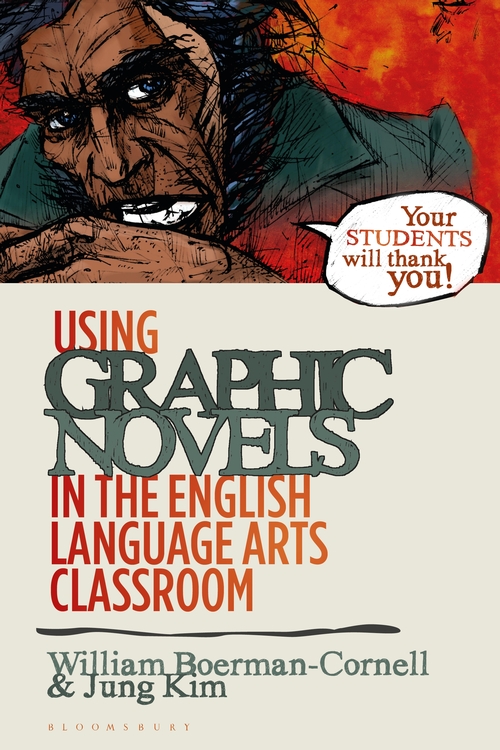2018 School Spending Survey Report
Using Graphic Novels in the English Language Arts Classroom
Bloomsbury Academic.
2020.
224p.
Tr $90. ISBN 9781350112698; pap. $29.95. ISBN 9781350112681.
COPY ISBN
 To explain the boundless potential of graphic novels in language arts classrooms, one must first explain and justify the format for unfamiliar readers. Boerman-Cornell and Kim pull off both feats in this fount of practical and timely educational guidelines that even skeptics will find applicable. The authors discuss using graphic novels as lenses to analyze narrative structure or adaptation, as well as pairing titles with prose works. Graphic novels also offer an opportunity to study multimodal composition. The academic foundations buttressing the authors’ suggestions range from sections on literary criticism and Louise Rosenblatt’s transactional theory to Scott McCloud’s categories of interaction between words and pictures. Visual cues in the margins, full-color excerpts, and generous provision of example texts lead to a fusion of the theoretical and the practical. The authors offer sample unit breakdowns for different subject matter, including their original framework, called GRAPHIC, for approaching graphic novels from a variety of angles. The works cited at the end of each chapter, as well as the annotated bibliography of 120-plus additional recommendations, form a comprehensive reading list for understanding and teaching the format as well as a golden shopping list for libraries. There is not a scrap of information that is not codified into curricular advice.
To explain the boundless potential of graphic novels in language arts classrooms, one must first explain and justify the format for unfamiliar readers. Boerman-Cornell and Kim pull off both feats in this fount of practical and timely educational guidelines that even skeptics will find applicable. The authors discuss using graphic novels as lenses to analyze narrative structure or adaptation, as well as pairing titles with prose works. Graphic novels also offer an opportunity to study multimodal composition. The academic foundations buttressing the authors’ suggestions range from sections on literary criticism and Louise Rosenblatt’s transactional theory to Scott McCloud’s categories of interaction between words and pictures. Visual cues in the margins, full-color excerpts, and generous provision of example texts lead to a fusion of the theoretical and the practical. The authors offer sample unit breakdowns for different subject matter, including their original framework, called GRAPHIC, for approaching graphic novels from a variety of angles. The works cited at the end of each chapter, as well as the annotated bibliography of 120-plus additional recommendations, form a comprehensive reading list for understanding and teaching the format as well as a golden shopping list for libraries. There is not a scrap of information that is not codified into curricular advice.
VERDICT This book is a gift to educators, radiating with the authors’ infectious enthusiasm and wealth of experience.
RELATED
ALREADY A SUBSCRIBER? LOG IN
We are currently offering this content for free. Sign up now to activate your personal profile, where you can save articles for future viewing





Be the first reader to comment.
Comment Policy:
Comment should not be empty !!!